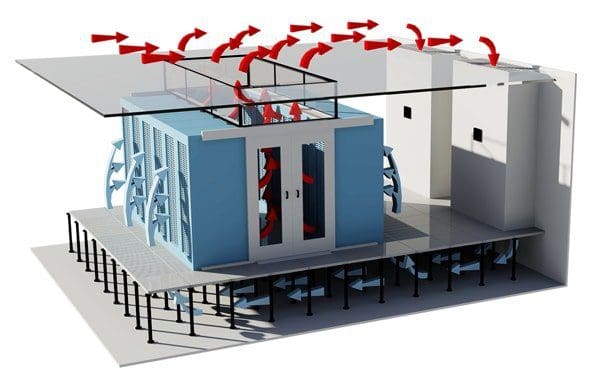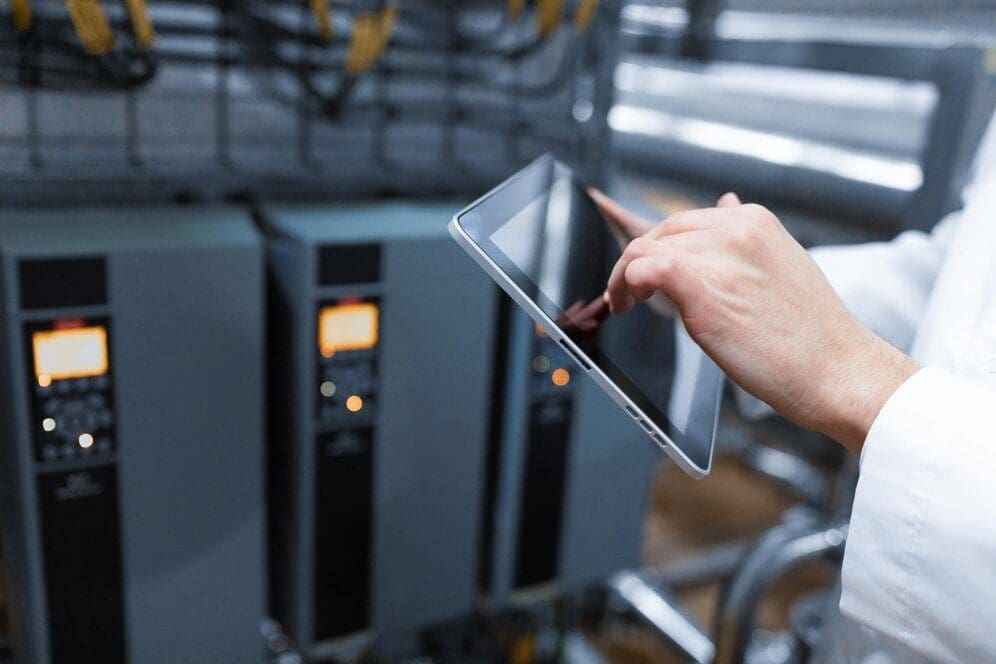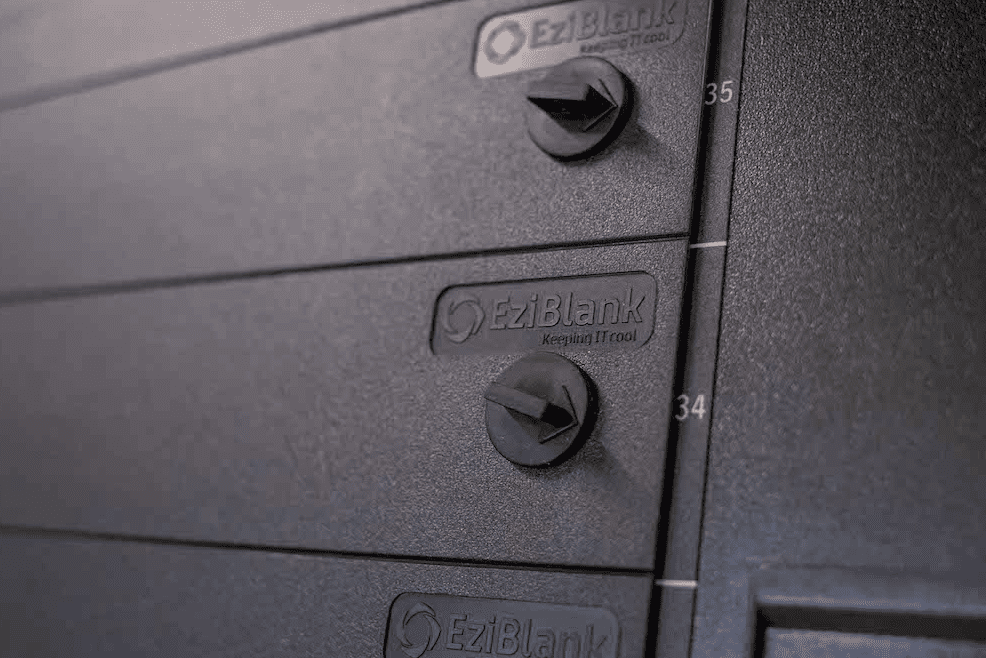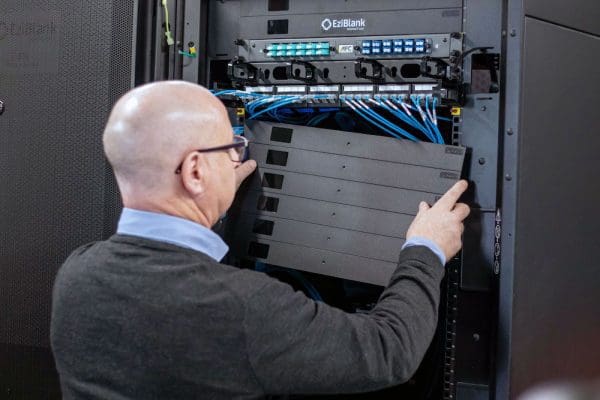Hot Aisle vs Cold Aisle Containment
Maybe you’ve heard the terms hot aisle or cold aisle containment floating around the IT world and not sure what they mean. Or perhaps you’re on your way to being an expert and just need a few more details about which is best for you.
Before you continue reading, if you are looking for some background information on what is hot aisle containment or what is cold aisle containment be sure to read out previous guides. But to recap, essentially, hot aisle containment directs warm exhaust air from servers into a cooling unit, while cold aisle containment directs cool intake air into the servers.
While both similarly aim to increase cooling capacity and reduce operating cost, there are some important differences to consider when making a decision about which type to use. Exactly which is best suited for you depends on a variety of factors.
Stay tuned as we answer your question – what are the differences between these two containment methods and which is best for you.
In the article:
[—ATOC—]
[—TAG:h2—]
The hot and cold aisle basics
The first thing to consider, before thinking about any advantages or disadvantages, is whether the layout of your data center is suited to a particular system. For data centers in a straight line, it’s easy to implement either type of containment.
However, if your data center is in a square or L-shape, it can be more difficult to use cold aisle containment because the servers are in the corners and the air would have to travel a longer distance. In this case, hot aisle containment may be a better option.
If thinking about the layout doesn’t help you work out which system is best for you, it comes down to the advantages and disadvantages. While typically, hot aisle containment is considered the more efficient of the two, other differences in your data center may mean that cold aisle containment is better.

Image source: Colocation America
Hot aisle containment
Hot aisle containment is a type of aisle containment that directs hot equipment exhaust air from servers into a cooling system via a closed off pathway or system of ducts.
The hot exhaust air is then cooled, typically by an air conditioning unit, and sent back into the data center to be used again.
One of the most important principles with hot aisle containment is ensuring the aisle is tightly sealed off so that hot air doesn’t escape and the cold air intakes are most effectively able to cool the air. If there is no tight sealing, then you are wasting part of your total cooling capacity and reducing the energy you save from the containment system.
Advantages of hot aisle containment
There are many advantages of a hot aisle system that you may want to think about.
- Reduces overall operating costs
- Typically has a greater effectiveness than a cold aisle system
- The cold air intakes facing the open part of the room means that a small leakage results in less wastage of air conditioning.
- The open space is a more comfortable temperature to be in and there is less wasted energy on cooling this
- No additional fire detection system is needed
Disadvantages of hot aisle containment
However, there are some disadvantages with a hot aisle containment system to take into consideration.
- The hot temperatures in the hot aisle can be very uncomfortable to work in
- Typically the more expensive option between hot and cold aisles
- More difficult to fit to an existing data center as more infrastructure, such as a contained pathway or duct system for the hot air to travel through, is needed
- Can be more difficult to maintain than a cold aisle system
Cold aisle containment
Cold aisle containment is also based on the principle of containing air in an aisle, but here instead it is the cold airflow.
The cold aisle is contained with doors at the end and a roof over the top and this is then directed into servers so that they are cooled to the proper temperature.
Similar to hot aisle containment, it is important to make sure the aisle is tightly sealed so that the cool air doesn’t escape. This improves efficiency and reduces the costs and energy used for your data center.
Advantages of cold aisle containment
There are many advantages of a cold aisle containment system that you may want to consider.
- Reduces overall operating costs
- Easier to implement in an existing data center – only doors and a roof have to be fitted as opposed to a whole duct/path system for hot aisle containment systems
- Less expensive than hot aisle containment
- Often easier to maintain
- Less severe temperatures in any particular aisle, although the entire open space of the data center is warmer than in hot aisle containment
Disadvantages of cold aisle containment
However, there are also some disadvantages.
- Cold air can escape from the aisle, which decreases efficiency
- The temperature of the open space can be uncomfortable to work in – additional cooling might have to be directed here which results in increased energy use
- Full cold aisle containment creates a separate space, for which a separate fire detection system is required in addition to the fire detection system for the entire room.
Is hot or cold aisle containment is better you?
So, while hot aisle containment is typically more efficient, it is also less cost-effective and more difficult to fit into an existing data center.
Cold aisle containment overcomes these challenges but also has additional disadvantages such as the requirement of a separate fire detection system.
Ultimately what is right for you comes down to your individual data center. By taking into consideration these advantages and disadvantages we have gone into, hopefully you will be able to identify which is best for you.
For more information about data centers in general, or more details about products to use your hot or cold containment aisles, head over to our info hub which is updated with up to date information.
If you’re ready to get started with hot or cold aisle containment, view our range of data center cooling solutions here.



